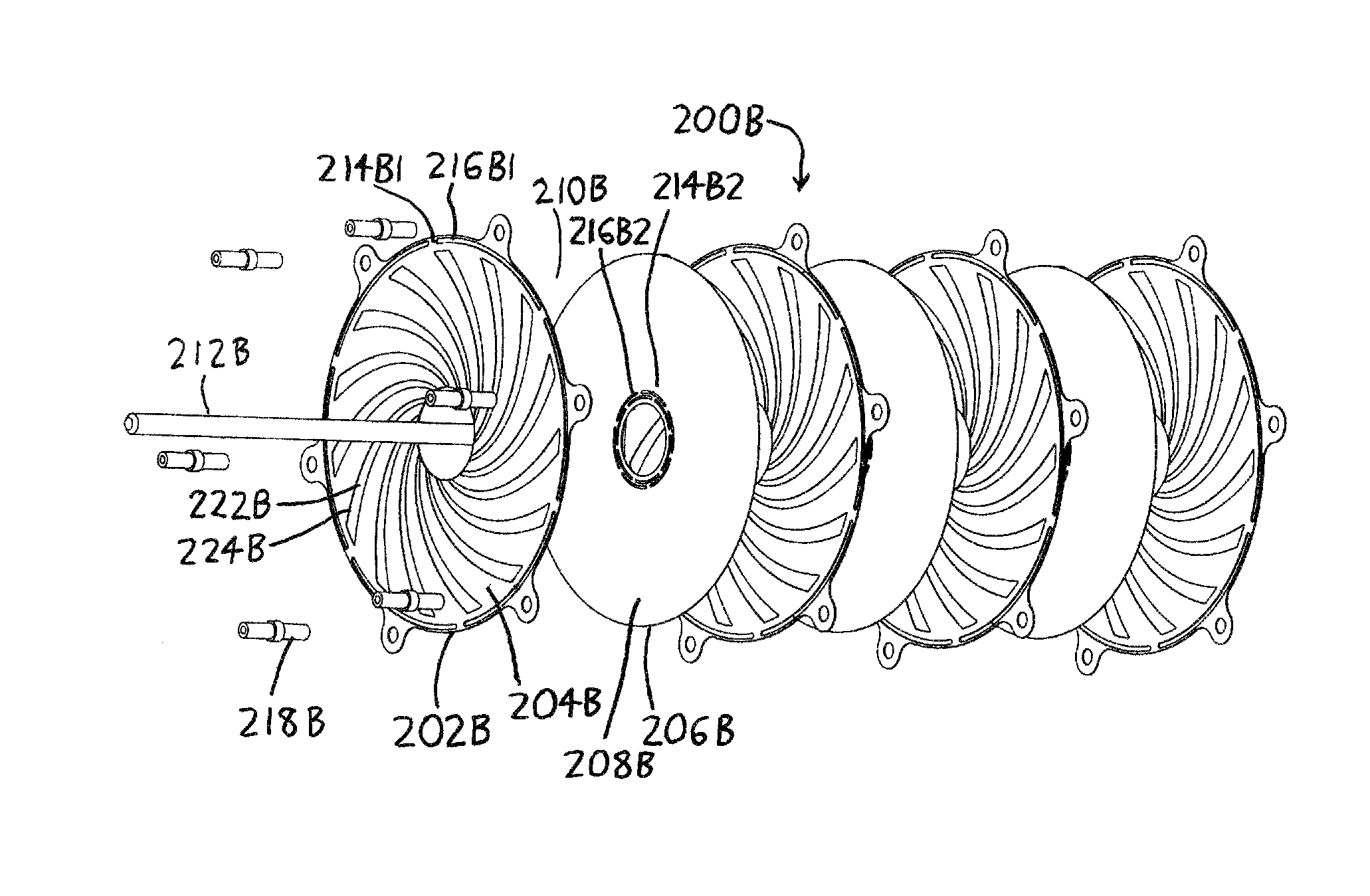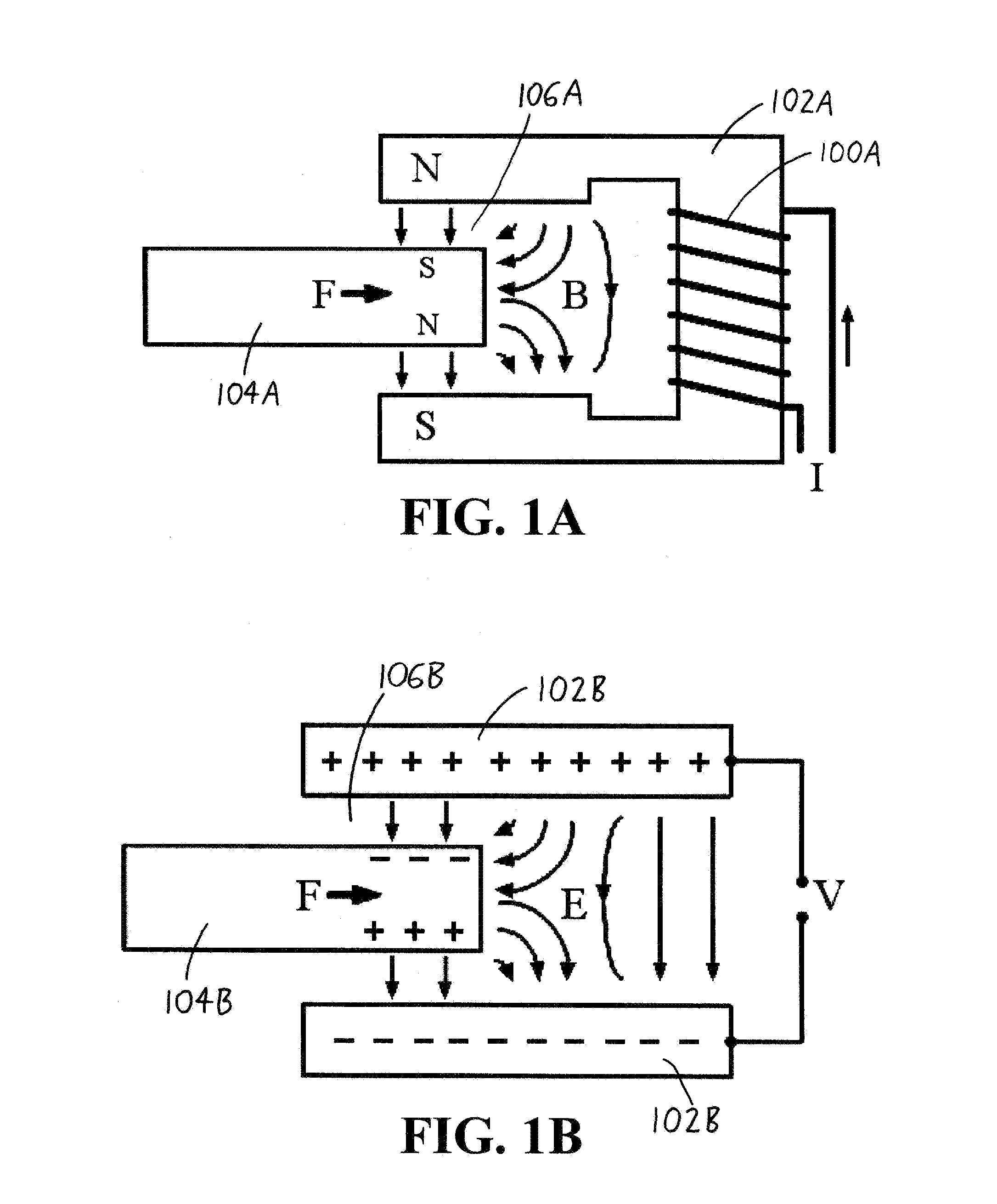Self-conforming plates for capacitive machines such as electrostatic motors and generators
a capacitive machine and self-conform technology, applied in the field of capacitive machines, can solve the problems of limited plate spacing and parallel alignment, low power density, and presently rarely used capacitive machines
- Summary
- Abstract
- Description
- Claims
- Application Information
AI Technical Summary
Benefits of technology
Problems solved by technology
Method used
Image
Examples
Embodiment Construction
[0032]Expanding on the discussion begin in the “Summary of the Invention” above, preferred versions of the capacitive machines utilize two features. Initially, the machines exploit the fluid boundary layer effects that occur at the interface between a moving surface and a fluid: while in motion, the surface “drags” fluid along with it. If moving and stationary parallel plates are sufficiently close, the moving plate will effectively “pump” fluid between them, with the pressure of the fluid (which is dependent on the speed of plate motion) then helping to maintain separation between the plates. Discontinuities in the plates in the form of flexures and / or flow-modifying walls may then be provided to further assist in maintaining the walls in spaced parallel relationship (where it should be understood that the term “parallel” encompasses both literally parallel and at least substantially parallel alignments). Flexures can be situated on a capacitive machine's plates such that the plate...
PUM
 Login to View More
Login to View More Abstract
Description
Claims
Application Information
 Login to View More
Login to View More - R&D
- Intellectual Property
- Life Sciences
- Materials
- Tech Scout
- Unparalleled Data Quality
- Higher Quality Content
- 60% Fewer Hallucinations
Browse by: Latest US Patents, China's latest patents, Technical Efficacy Thesaurus, Application Domain, Technology Topic, Popular Technical Reports.
© 2025 PatSnap. All rights reserved.Legal|Privacy policy|Modern Slavery Act Transparency Statement|Sitemap|About US| Contact US: help@patsnap.com



